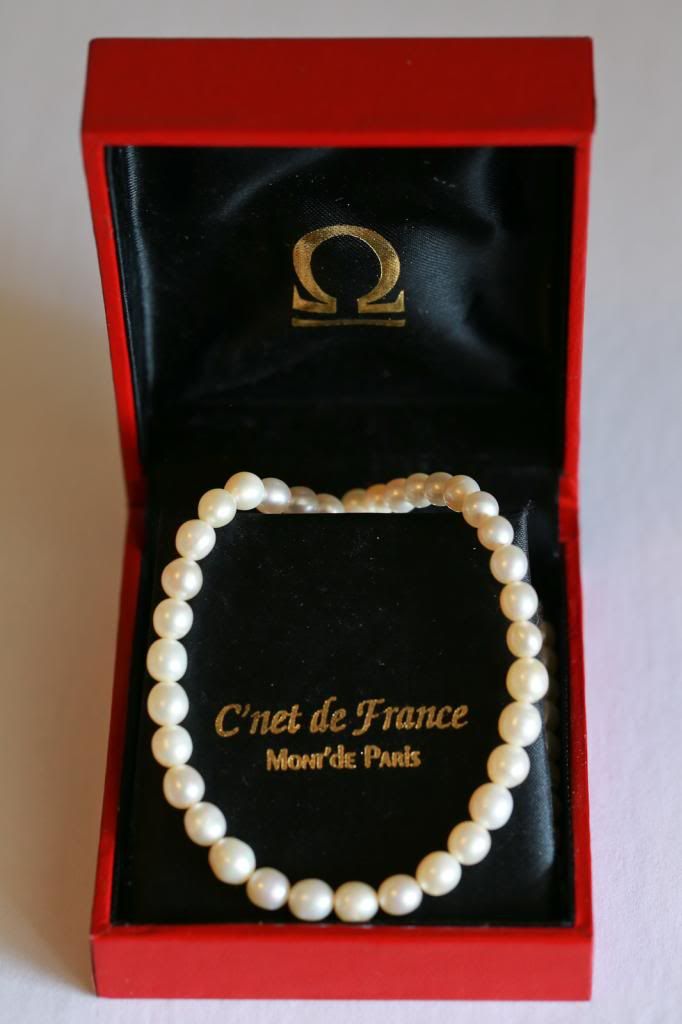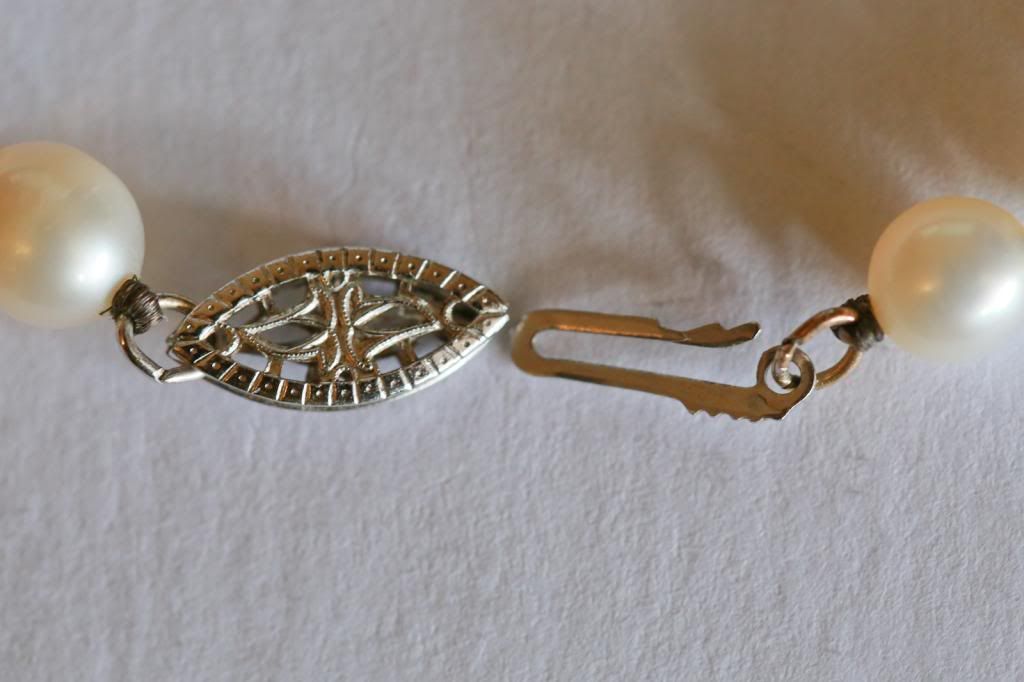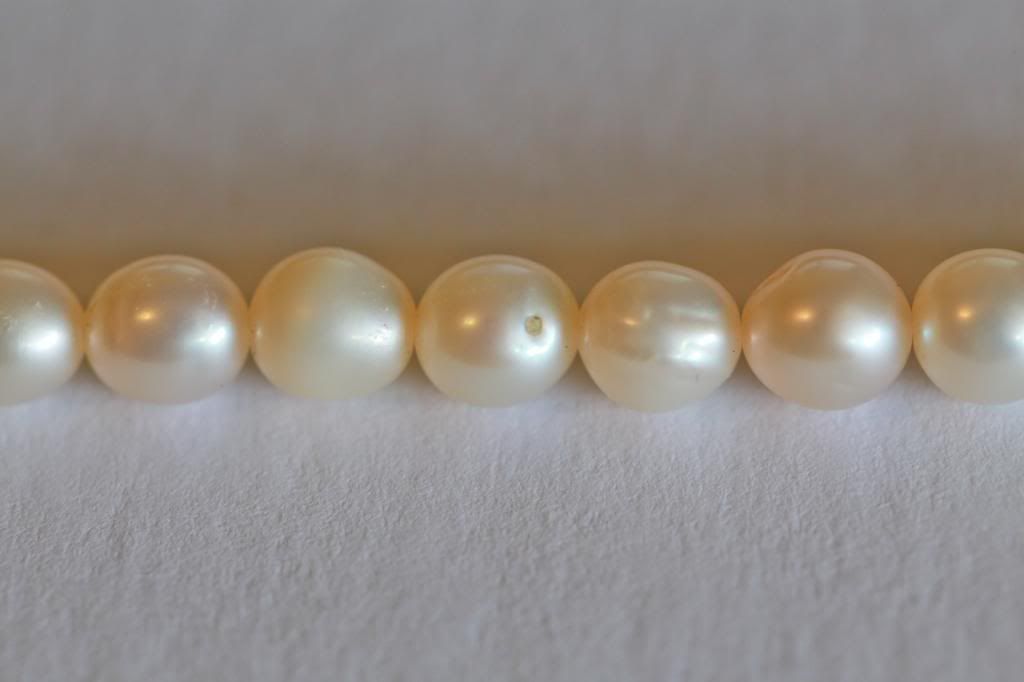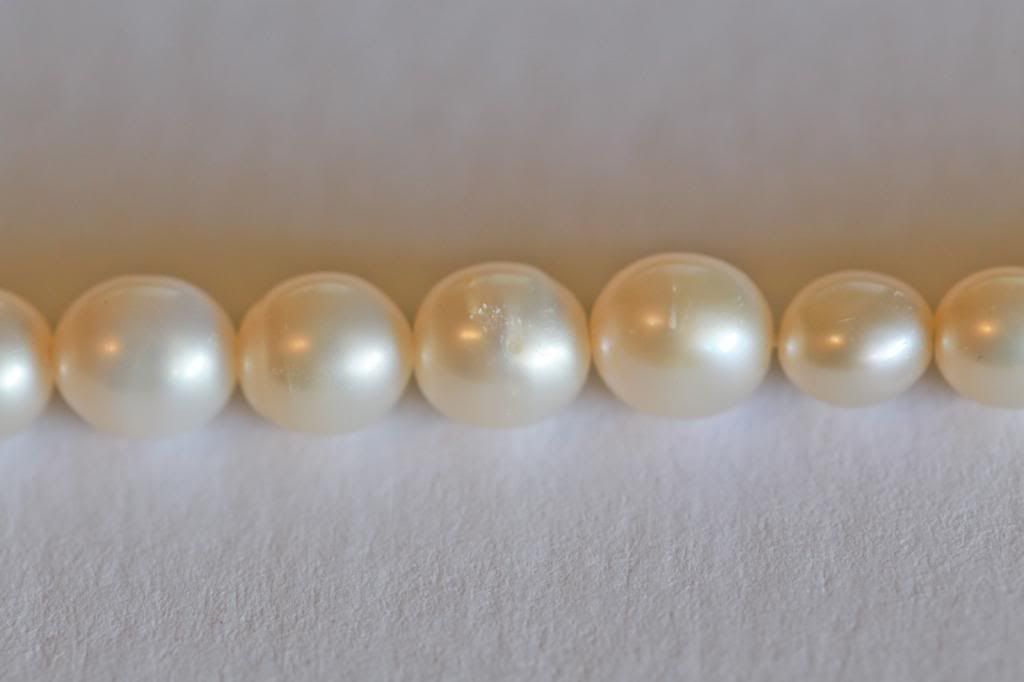michael6liu
New Member
- Joined
- Oct 7, 2013
- Messages
- 2
Hello,
I received these pearls from my grandma three years ago as a gift for my future wife. They come with a red box with a sign and some French letter as shown below. However, they do not have any certificate and I wasn't able to find any information from the web about the brand.

Until I found this forum, I decided to give it a try and see if anyone could help me. To answer the questions from the top thread:
1. These pearls are gritty when rubbing against each other.
2. Photos are linked at the bottom, including photos of imperfections and two X-ray photos. However, since no films are used in X-ray these days, I could only take a photo of what was displayed on the monitor. I'm not a radiologist so I do not have access to high resolution monitors.
3. I do not know any history about these pearls.
4. A photo of the clasp is also linked below.
5. The pears are slightly oval rather than completely round. The diameters range from 5.2mm from the smallest to 7.1mm the largest.
Any insight into the kind of pearls are appreciated. Thank you.







I received these pearls from my grandma three years ago as a gift for my future wife. They come with a red box with a sign and some French letter as shown below. However, they do not have any certificate and I wasn't able to find any information from the web about the brand.

Until I found this forum, I decided to give it a try and see if anyone could help me. To answer the questions from the top thread:
1. These pearls are gritty when rubbing against each other.
2. Photos are linked at the bottom, including photos of imperfections and two X-ray photos. However, since no films are used in X-ray these days, I could only take a photo of what was displayed on the monitor. I'm not a radiologist so I do not have access to high resolution monitors.
3. I do not know any history about these pearls.
4. A photo of the clasp is also linked below.
5. The pears are slightly oval rather than completely round. The diameters range from 5.2mm from the smallest to 7.1mm the largest.
Any insight into the kind of pearls are appreciated. Thank you.








